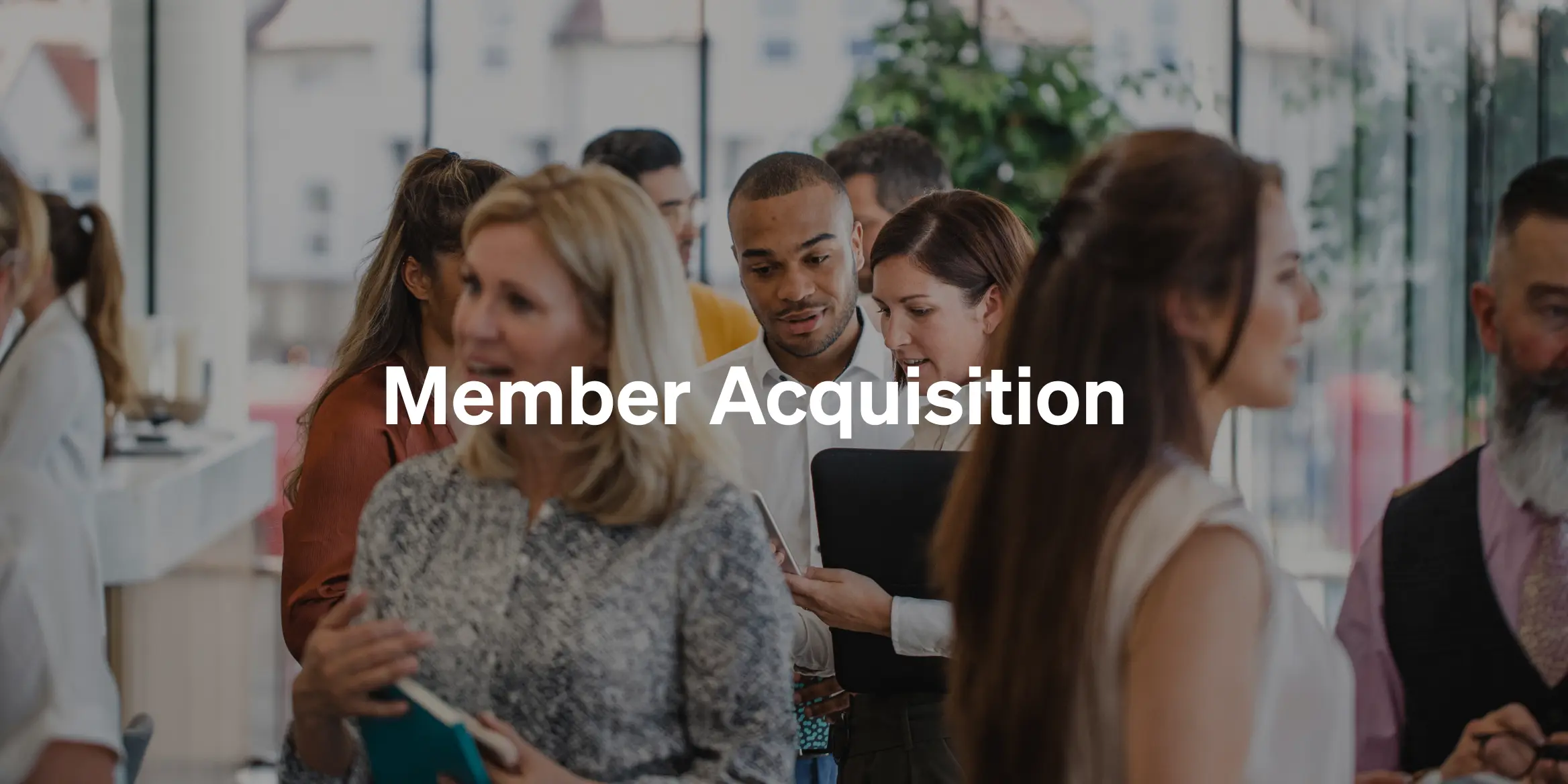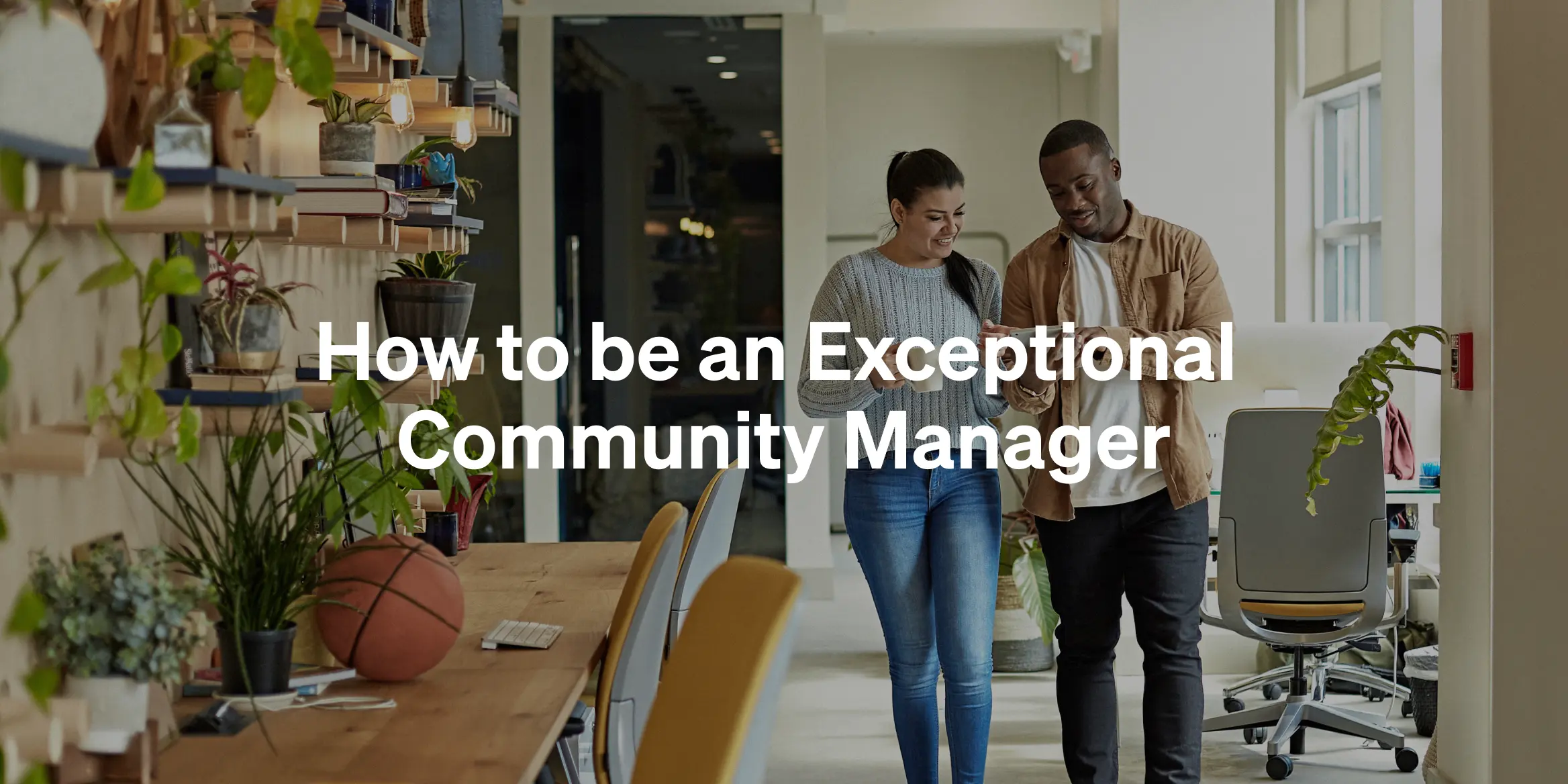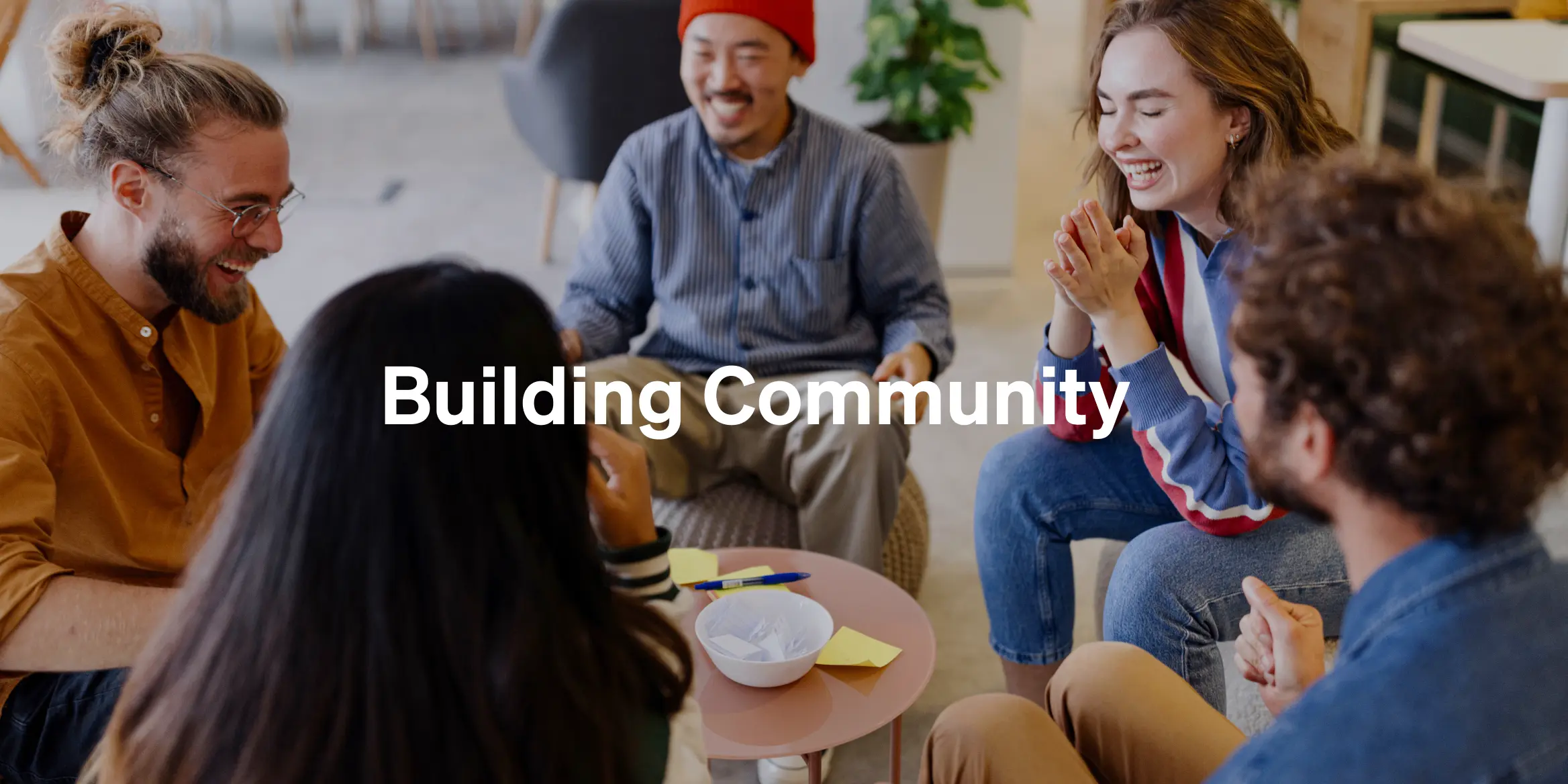
TL;DR
- Community is the core value of coworking, fostering connection, reducing churn, and turning members into long-term advocates
- Building community starts before launch and thrives through intentional design, regular engagement, and a clear sense of purpose.
- A strong community makes your business more resilient, referral-driven, and able to offer a richer, premium experience.
At the heart of every successful coworking space is an empowered community driving it forward.
How you begin to cultivate a lasting community in your coworking space is an art and a science that operators are eager to understand.
We asked nine experienced coworking leaders for their best piece of advice for building an engaged community. From here, we mapped out some of the top questions we hear from coworking operators when it comes to community building to answer your biggest questions with expert-backed advice and experience.
Read on to hear exactly how to build a coworking community…from operators who have built thriving communities themselves.
- Why is community a key part of coworking?
- What impact does community have on your coworking space as a business?
- How do I build a coworking community?
- Start generating interest before you open your doors
- Think about what you’re personally passionate about
- Consider the vibe or culture you want to create
- Invest heavily in your first 5–10 members
- Create an exceptional member experience
- Facilitate connections between members
- Use technology to help you (not hurt you)
- Get involved in the broader community
- Host a variety of different kinds of events
- Measure the success of your community efforts and continue iterating
Why is community a key part of coworking?
Community has been core to the coworking ethos since its inception in 1995. In fact, the word “coworking” itself is made up of the root “co” meaning joint, jointly, and together, and “working”. It was born of the idea of “collaborative work among equals”, hence coworking.
Today, community remains a key part of the coworking experience. Not only do most coworking operators believe in the significance of community in our day-to-day lives, they also use community as a way to differentiate themselves and provide value. And with remote workers now making up over 15% of coworking space members, community is becoming more valuable than ever before.
What impact does community have on your coworking space as a business?
Many coworking space operators choose to invest in community building because having a strong community can:
- Increase member retention – members are more likely to stay in a coworking space if they feel like they are a part of something bigger than themselves
- Increase revenue per member – community can increase your revenue per member by creating a space where people are more likely stay and engage with via events or other add-on amenities
- Lower customer acquisition costs – a strong community can support word-of-mouth referrals which can make your advertising more effective while lowering your overall acquisition costs
Not only is community building good for your members, it’s also good for business. In the rest of this article, we’ll cover how to start building it.
How do I build a coworking community?
Here is a step-by-step process you can follow to build a coworking community, according to our panel of expert operators:
- Start generating interest before you open your doors
- Think about what you’re personally passionate about
- Consider the vibe or culture you want to create
- Invest heavily in your first 5-10 members
- Create an exceptional member experience
- Facilitate connections between members
- Use technology to help you (not hurt you)
- Get involved in the broader community
- Host a variety of different kinds of events
- Measure the success of your community efforts and continue iterating
Follow these steps and you’ll be well on your way to creating a coworking space that people actually want to be a part of. Let’s take a look at each one in more detail below.
1. Start generating interest before you open your doors
Building community before you open your doors is a strategy that came recommended to us by a number of coworking operators, including Mark Eaton, CEO & Founder at The Corner Coworking in Cochrane Alberta, and Steve Krueger, Founder at ECOMsquare.
Mark was able to create a “pre-built” coworking community by holding regular networking events. He called this “coworking without a coworking space”.
“Before we launched The Corner Coworking, we ran weekly networking/coworking meetups in local cafes,” says Mark. “This gave us a couple of opportunities… firstly, we could build a coworking community before we had a physical space; secondly, it allowed us to validate the viability of a coworking space.”
Steve did something similar and started a community group in 2014, nearly six years before opening his physical space. He held meet-ups across North America before investing in a central gathering space. When he finally did invest in a space, he already had members lining up outside the door.
To build a coworking community before you open, you can:
- Invest heavily in your digital community via coworking software like Optix
- Hold local meet-ups and networking events at other public spaces
- Find an existing community (ie. female entrepreneurs) and integrate yourself into it
“Once the community had enough strength and momentum, they wanted to work together more often and pushed us to find and open a coworking space; we then knew we were ready.”Mark Eaton, CEO & Founder at The Corner Coworking
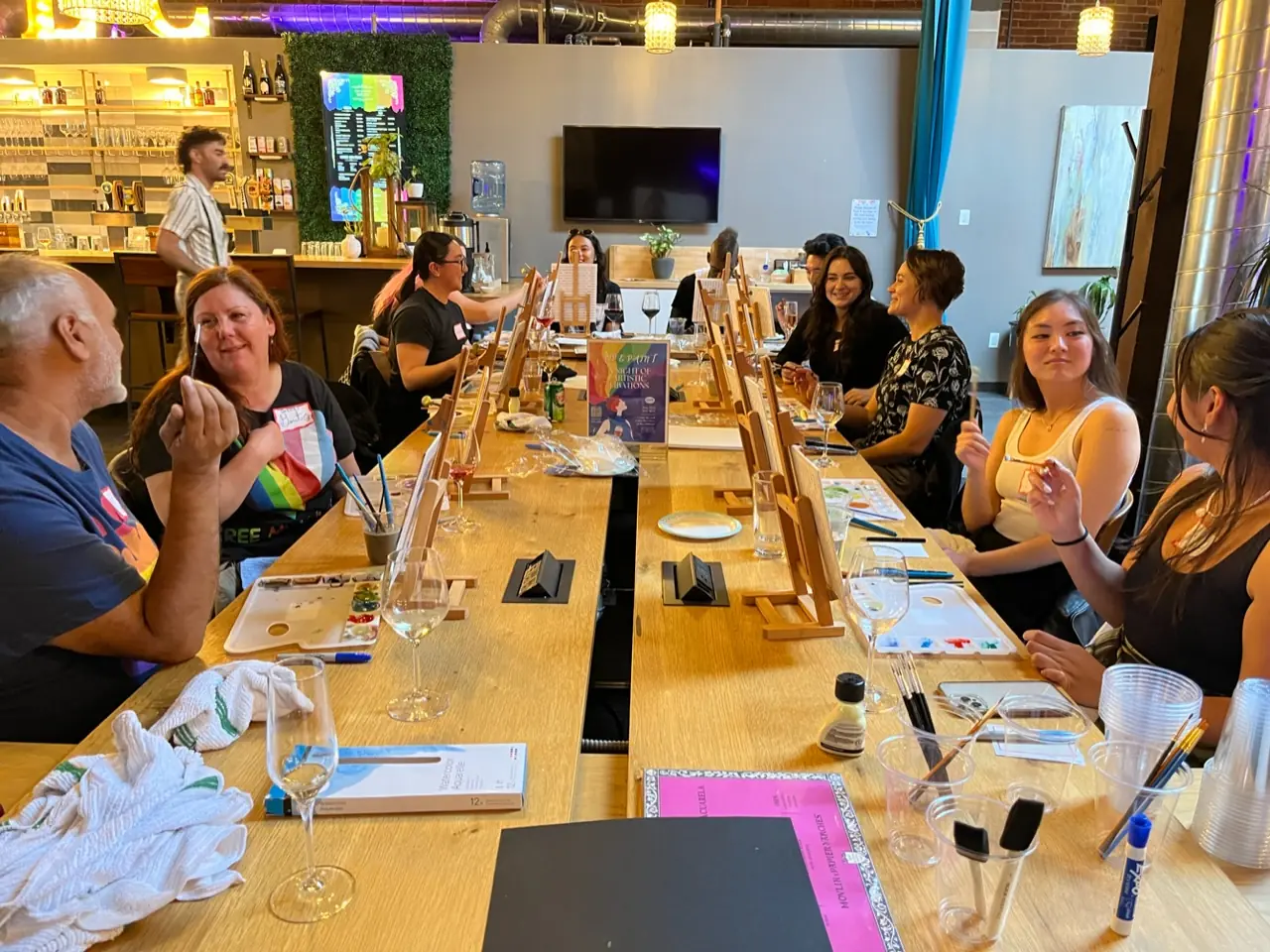
True community comes from authentic expression. Fostering connection often comes back to identifying and rallying around shared interests and passions. Rebecca Brian Pan, Co-founder at Trellis Coworking, says operators should focus on what they are personally passionate about to drive engagement in the community.
“My best piece of advice is for each community builder to focus on what he/she/they is personally passionate about,” says Rebecca. “That passion is the secret sauce for true community engagement.”
In her space, this looked like starting a running club because one of her team members loved running. Eventually this led to a trip to Mendocino for a race, a weekend at a winery together, and a whole lot of running and human connection.
To start building an authentic community, you can:
- Think about your personal interests, passions and what gets you excited
- Talk to your team about the passions they want to share
- Consider ways of bringing your passions to the community and iterate as you go
By focusing on what you’re passionate about, you can create an authentic connection amongst members – and have fun in the process.
“We did sip-and-paints together and community art projects when I had more creative folks on the team. We started a band. The list goes on, but it all comes down to what people love and want to share.”Rebecca Brian Pan, Co-founder at Trellis Coworking
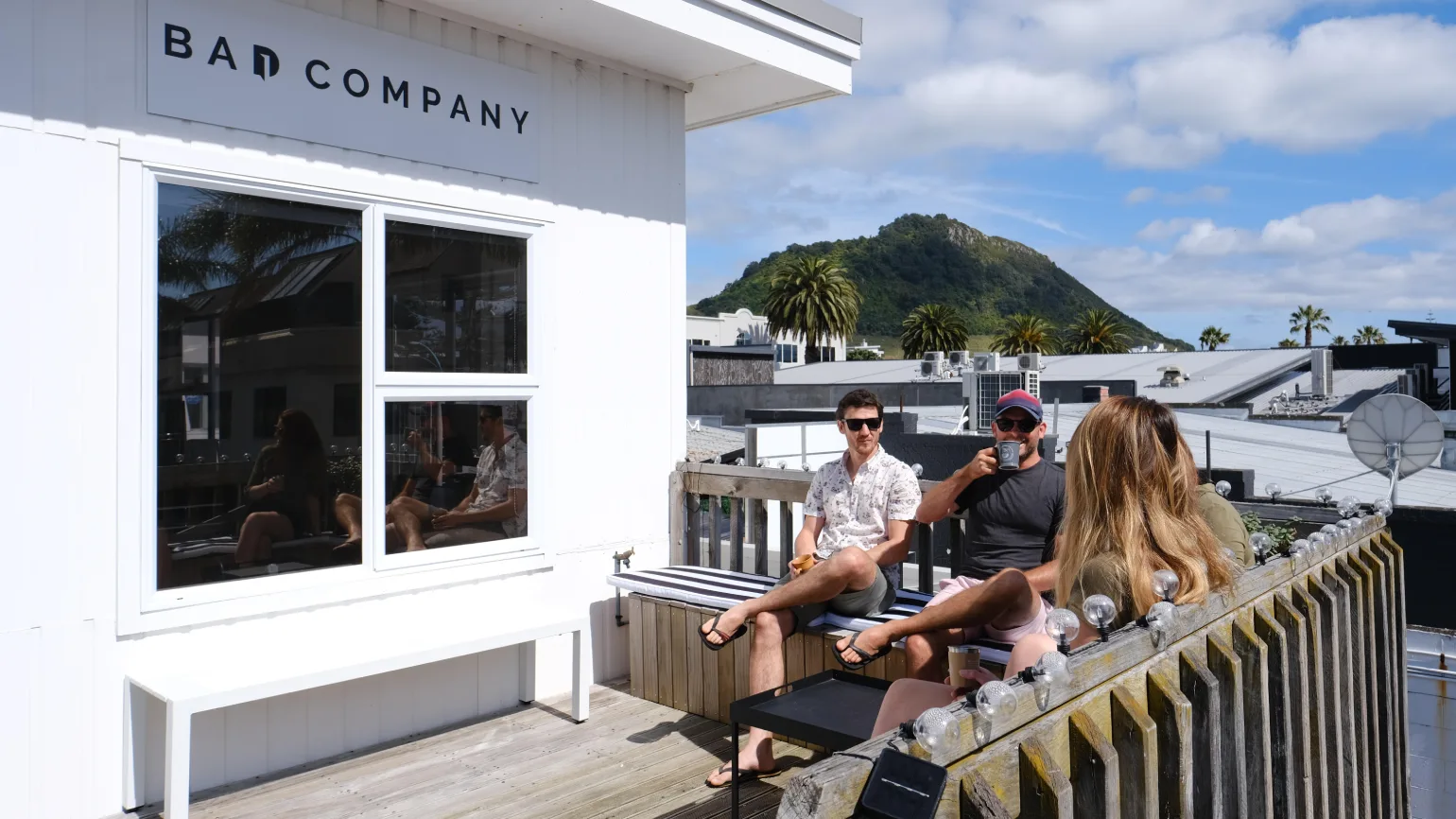
Part of developing a community is creating something that people want to be a part of. For Tori Taylor, Co-founder at Bad Company, and Viarni Bright, Brand Manager at Bad Company, cultivating the right energy is integral to helping people find a home within the community space.
“I’ve had a few people recently come in and say that they’ve tried a lot of other shared spaces and this has the most welcoming vibe,” says Viarni. “So when you hear that, you’re like, okay. Cool. We’re doing our mission.”
For Bad Company, this looks like playing music, allowing dogs, and setting the tone that this is a place where people come to work and connect. This signature vibe helps attract the right kind of people to their community.
To create a culture and vibe to your coworking community, you can:
- Set a welcoming tone with the right playlist from the moment someone walks in
- Encourage authentic connection through shared values
- Design your space to reinforce behavior and belonging
Setting a distinct tone to your space from the get-go helps build a strong group of members who enjoy working in the space…and that’s what community is all about.
“You can get a sense of the energy when you walk in and I think this allows members to fit into that company vibe. They can come here and focus, but also have a laugh and connect.”Tori Taylor and Viarni Bright, Bad Company
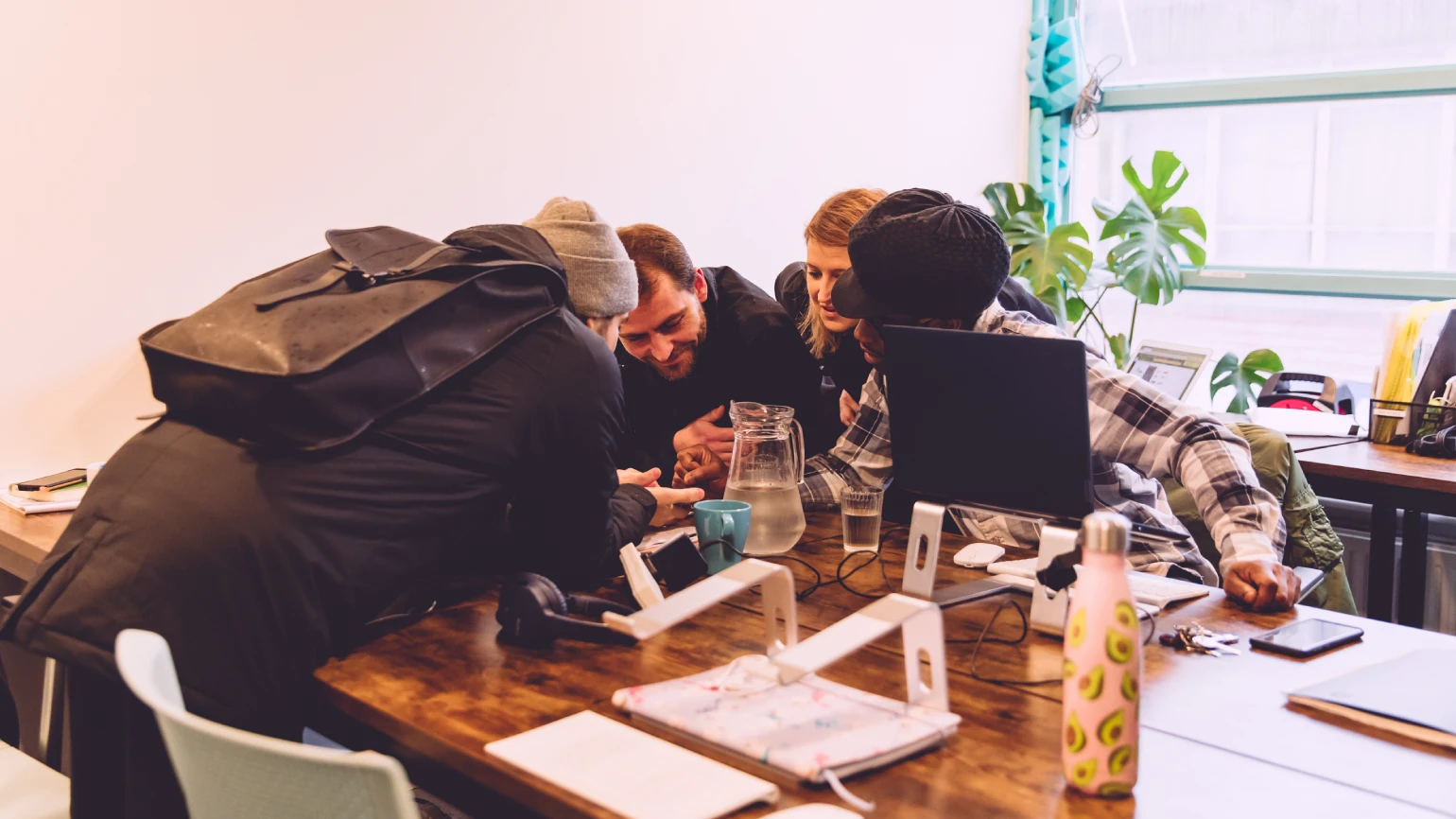
Your first few community members are going to set the tone for the rest of your community, so it’s critical to get it right.
Gerald Vanderpuye, co-founder at Impact Brixton, says selecting your first group of community advocates is the most important decision you’ll make in your community building journey.
“When you start building a community, there are the first two to ten people that are going to help you scale,” says Vanderpuye. “They will shape everything beyond that, from the values of the organization to what the community represents, to how it’s marketed, to the culture. It’s everything.
Be intentional with who you start your community with, and select people whose values align with what you hope your business will become. In doing so, you can set the tone for the community from the very beginning.
To invest in your first few coworking space members, you can:
- Hand-pick early members who reflect your ideal culture (these are probably people you already know!)
- Create an online group just for early members or give them “founding member” recognition
- Ask early members to host the first events or lead a community initiative
“Spend 10x the amount of time building that first 10 people than the next 10 or even 50. They shape so many things - and it's nearly impossible to redo that again.”Gerald Vanderpuye, co-founder at Impact Brixton
5. Create an exceptional member experience
members need to want to keep coming back. This comes down to providing an exceptional experience for everyone who walks through the doors.
Karen Tait, Founder & CEO at The Residence Coworking, wants everyone to feel how special The Residence is, no matter their membership status. “You only get one chance to make a great first impression,” says Karen. That’s why she invests heavily in people’s experience, as soon as they walk through the doors – even down to giving the tours herself.
To create a memorable experience for members, you can:
- Design an intentional onboarding journey
- Celebrate birthdays and wins, keep a member spotlight board, or send occasional shout-outs via your coworking messaging system
- Foster connection through thoughtful rituals and shared spaces
By creating an exceptional and positive experience for each and every visitor, you can make them feel like they’re a part of a community from the moment they join. In the words of Karen, “Smile – it’s contagious.”
“I want everyone who visits The Residence to feel like a million dollars, and that their visit was important to us, whether you are here full-time, just for the day or just visiting.”Karen Tait, Founder & CEO at The Residence Coworking
6. Facilitate connections between members
Community is born of genuine and authentic connection. That’s why Michael Mason, co-founder at Olio Coworking, believes in setting up the space in a way that encourages spontaneous interactions between members.
“In our experience, creating a vibrant community can be challenging in large commercial coworking spaces,” says Michael. “This is where boutique coworking spaces like Olio Coworking have a clear advantage. With their intimate spaces and smaller membership bases, these spaces foster authentic interactions and organic relationship development.”
Creating connections between members that feel organic is a huge part of community building. Mason makes this happen through communal lunches, designated spaces that encourage impromptu discussions, and a light-hearted environment that supports genuine personal exchanges.
To facilitate more connections between members, you can:
- Create large gathering spaces, like a kitchen, that are intentionally designed for people to bump into each other
- Introduce people who have similar interests and occupations
- Host casual meet-ups at designated times throughout the week for a low-stress way of creating connection
Oftentimes the easiest way to get members connected is by creating an environment wherein that connection can happen effortlessly.
“In addition to the usual networking events and workshops, we believe coworking spaces should encourage members to interact comfortably and naturally in the course of their daily work and personal lives.”Michael Mason, Co-founder at Olio Coworking
7. Use technology to help you (not hurt you)
Technology can have a huge impact on community building. You can use technology to create a better experience in your space by simplifying invoice payments, resource booking, and more. You can also use coworking software like Optix to connect your community outside of the physical space.
Chris Pereira, Community Manager at Suite Genius, uses Optix to connect their community, even when they’re not all together. This comes in the form of public group conversations similar to Slack channels, direct messaging between members, a directory where members can browse others in the space, and more.
Through technology, members can deepen their relationships with one another without needing to be there physically. This means you can start to build a community at scale.
To use technology to build coworking community, you can:
- Leverage digital community features to encourage daily connection
- Automate touchpoints to personalize the member journey
- Use analytics to understand and serve your community better
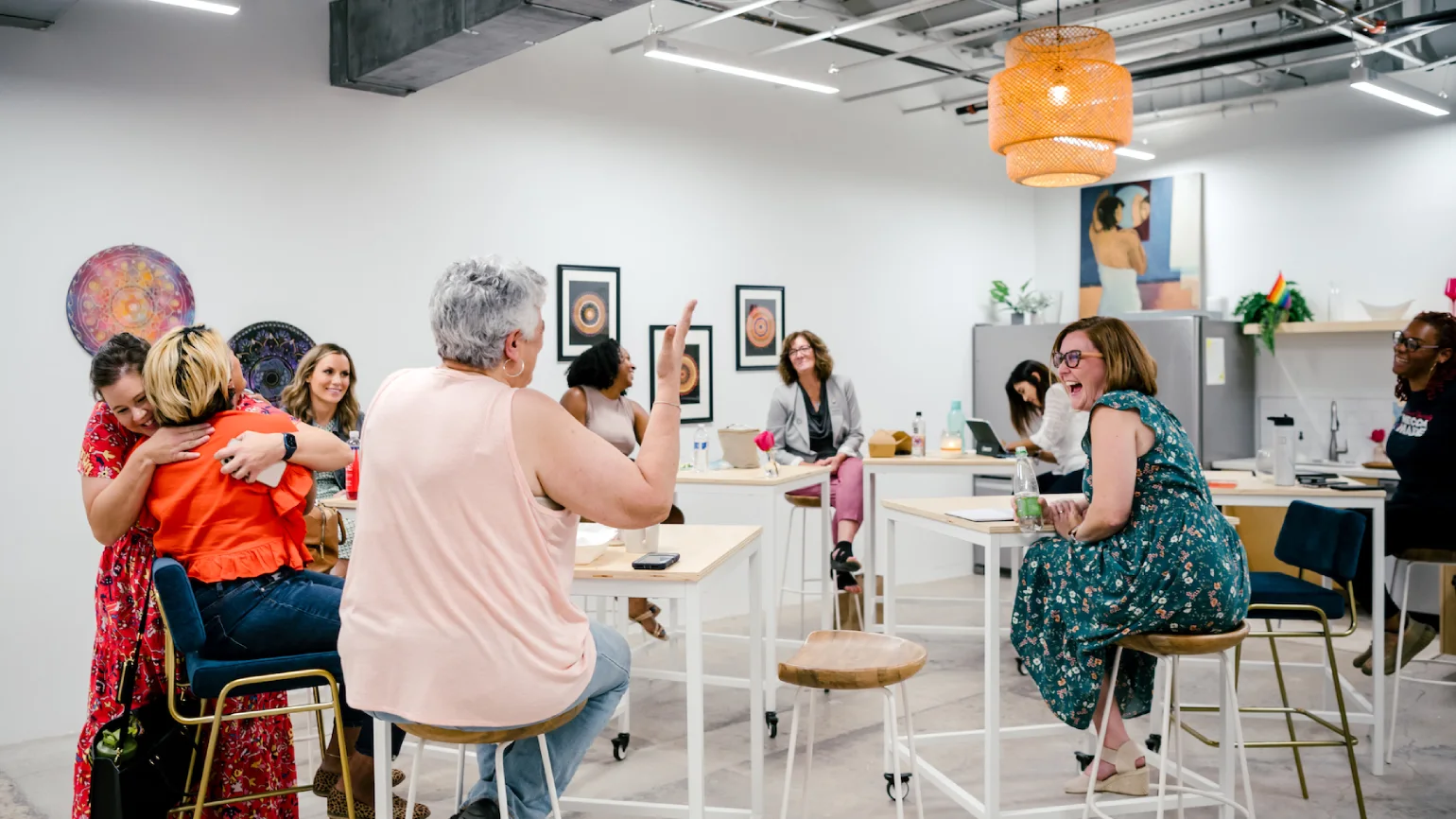
We’ve seen a number of coworking spaces grow exponentially by getting involved in the greater community. As it turns out, sometimes showing up for your members means taking a step outside of your coworking space.
Maggie Segrich is the co-founder and CFO at Sesh Coworking, a female-centered, LGBTQ+ & BIPOC allied coworking space. She believes in being a community leader both in and outside of her coworking space.
“We believe our role as community leaders is to ensure our community feels seen, heard and respected – not just inside the walls of our physical space, but outside in the greater Houston community as well,” says Maggie.
In her community, this looks like showing up in the world when her community says they need more or less support in certain areas. This develops a trust and commitment that is impossible to fake.
To get involved in your broader community as a coworking space operator, you can:=
- Show up at local events and support community-led initiatives
- Partner with local organizations and voices
- Listen, then lead with purpose
Shifting the way you view your role from a coworking space operator to a community leader is a powerful way to better serve your members.
“The one piece of advice I would give on building community is that you have to show up, outside of your physical location, and listen to what people are saying in those other places.”Maggie Segrich, Co-founder and CFO at Sesh Coworking
9. Host a variety of different kinds of events
Events are a big part of community building for most coworking spaces. In our webinar with Tessa McLoughlin, Founder at KWENCH, she said events were one of their biggest drivers for community building, especially in the beginning.
Eaton says events have been integral to cultivating community amongst members as well. “We hold weekly theme days, including #WaffleWednesday, #CinnaMonday and #FromageFriday…all food-based, which helps to encourage those kitchen collisions between members.”
He has also created specific events in the greater community to not only bring people together, but to increase awareness of the coworking space, making events a double-hitting community building tactic.
To use events to build community, you can:
- Think about who your ideal member or ICP is and the kinds of events they want
- Experiment with different event formats at different times of the day
- Create a separate strategy for events for members and events for the broader community
“One more area in which we build community is by hosting relevant and specific community events. Startup Cochrane events allow local startups and growing businesses to connect and support each other; it has also become a lead generator for the coworking space.”Mark Eaton, CEO & Founder at The Corner Coworking

Community building is an iterative process. Success hinges on launching initiatives and measuring their impact over time.
Jenna Macken is the Customer Success Team Lead at Optix, and she spends a lot of time helping coworking space operators build impactful communities. She recommends you set a few high-level key performance indicators or KPIs to help measure the success of your community building efforts.
McLoughlin for example says their number one KPI is the number of friends someone has made in the community. It isn’t an exact science, but it’s an incredibly powerful measurement tool.
To measure the success of your community, you can:
- Define 3-5 KPIs to measure community engagement that you’ll track over time
- Run quarterly community check-ins or surveys with qualitative questions like, “Do you feel a sense of belonging here?”
- Track engagement in events, spaces, and conversations
“The most important metric that you see is in the feedback, surveys, and answers to intimate questions like, how many friends have you made? The retention rate is also a great sign of a strong community.”Jenna Macken, Customer Success Team Lead at Optix
What does the future of a coworking community look like?
Based on recent research into the trends shaping coworking in 2025, community consistently came out as one of the top trends for operators to be considering. But it isn’t really a trend at all. It’s an important part of what it means to have a coworking space in 2025.
It’s difficult to predict what the future of building a coworking community will look like. However, it is clear that community is only becoming more and more important to what coworking spaces offer.
Build an engaged community with Optix

Thank you to our wonderful coworking leaders who contributed to the article! We’re so happy to share your insights with our community. Interested in sharing your experience and expertise with the Optix community? Reach out to us at support@optixapp.com to share your story!
Frequently asked questions
A strong community transforms members into advocates, boosts retention, and helps your space thrive. For many coworking spaces, community should be treated as your core product.
Host regular meetups or coworking sessions in local cafés to assemble a pre-launch community and validate demand. You’ll have a better chance of succeeding when you finally open your doors.
Theme-based gatherings (e.g. #WaffleWednesday or Startup Cochrane) foster routine engagement, casual interaction, and generate on-ramps for new leads. It’s why events are one of the biggest contributors to community for many operators.
Smaller, boutique layouts and communal zones such as shared lunch tables or water‑cooler spots naturally spark informal conversations. Many operators invest in large, communal kitchens to help naturally bring people together throughout the day.



